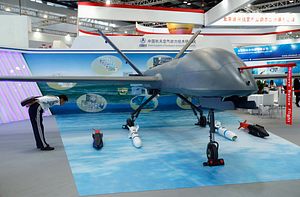For the first time in its history, the People’s Liberation Army can boast a homegrown arsenal of sophisticated, modern weaponry. The military-industrial complex of the People’s Republic of China has two fifth generation fighters in development, has demonstrated the capacity to build some of the most sophisticated ballistic missiles in the world, and has among the world’s healthiest military shipbuilding sector.
Yet for all of this success, serious questions persist. China remains dependent on access to foreign technology, with many of its most important systems stemming from Russian and Western designs. More importantly, however, China must figure out a way to manage the growing divide between its military and civilian economies. The United States and Europe have struggled mightily to harness their military-industrial complexes (MICs) to private industry, particular in the information technology sector. China’s MIC will soon face the same problems, and how it manages this obstacle will matter much more than questions about how much technology it can steal from the West.
Postwar Emergence
In 1949, the Chinese defense industry produced little in the way of sophisticated military technology. World War II and the Chinese Civil War had destroyed much of the urban industrial base, and the Soviets had confiscated much of the industrial equipment the Japanese had brought to Manchuria. The dire economic situation that faced the PRC in the wake of the revolution made for minimal investment in technological development.
As initially established, the Chinese MIC distinguished between the strategic weapons complex (nuclear weapons and their delivery systems) and the conventional weapons complex. The former would have the latitude to engage in basic research, as well as a degree of protection from the vagaries of CCP politics. The latter would concentrate on production, imitation of foreign technology, and incremental improvement. The strategic complex managed to develop nuclear weapons with minimal foreign assistance in conditions of tremendous poverty. The conventional weapons complex produced a huge number of obsolescent planes, tanks and ships, often a generation behind the industry standard. Both sides relied on state investment in large-scale, state-owned enterprises.

































